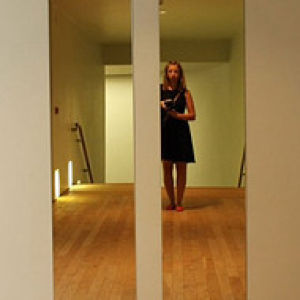Lifeline: the Gaza tunnels
I travelled south to Rafah today to visit a friend who works in the National Society for Law and Democracy. I met some of the team in the office and, before bringing me to his family home for a delicious lunch, he took me to the border to see some of the hundreds of tunnels between Egypt and the Gaza Strip.
As we approached the border, I attempted to take a photograph of a house which was literally riddled with bullet holes. However, a couple of police officers began shouting at me that it was 'mamnua' (forbidden) so I put my camera away.
We climbed a small, sandy hill and looked down on a number of tunnels, where some men and teenage boys were hard at work. Stretching out on either side were canopies above the openings of dozens more tunnels.
Determined to take at least one photograph, I took this surreptitious snap with my camera in front of my torso. I was unable to look at the screen, so it is not framed very well.
On the left, a truck waits to be loaded with goods from the tunnel. Next to it, a donkey strains to pull a cart laden with bags of cement. To the right of that, you can see the tunnel opening, with a small makeshift warehouse behind it and a motorbike parked in front. In the foreground are piles of steel bars, some 15 feet in length, which were brought in through the tunnels. In the distance, you can see buildings in Egypt.
As Israel continues to impose a closure on the Gaza Strip, allowing only a very limited amount of imports in and practically no exports out, the people of the Gaza Strip rely on the tunnels to survive. Though the Israel authorities often delight in posting photographs of well-stocked supermarket shelves in Gaza as supposed evidence that the economy is thriving, the reality is that almost all of the products on sale come in through the tunnels.
The tunnels vary in size and structure. Some are narrow, some large enough for cars to travel though. Some are shallow, others are deep underground and can only be entered through a shaft. Some have motorised pulley systems, while others (like one I stood in the entrance of last May) are rudimentary with the bottoms of barrels attached to ropes which are pulled by hand.
It is perilous work. Workers risk their lives, dying from suffocation, becoming trapped when tunnels collapse, or being killed when Israel bombs the tunnels. Most recently, an 18-year-old died when he was electrocuted in a tunnel.
Both Israel and now Egypt are trying to crack down on the tunnels, resulting in soaring prices and a fear that this lifeline for the people of Gaza will soon be cut off.
TIME magazine recently published an incredible photo essay with photographs far more dramatic and effective than this one. I won't be going down there any time soon to take my own!

Comments
Sign in or get an account to comment.


